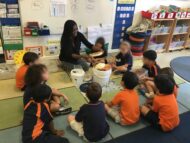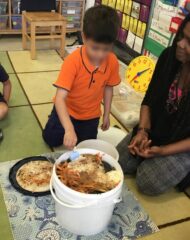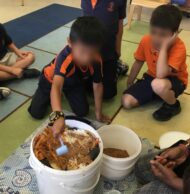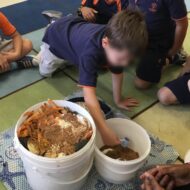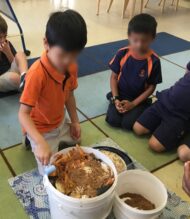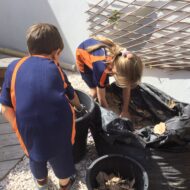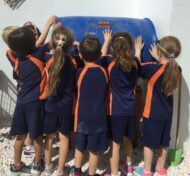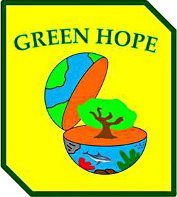I am in the second year of practicing bokashi composting in my classroom. I first started in kindergarten and continue with my present 1st grade class.
I have always been keen on environmental issues and sustainable practices. I decided to introduce bokashi because it provides a hands-on way for students to understand the importance of waste reduction and environmental responsibility. Growing up in the Caribbean, we would take leftover food scraps and place them around the root of plants in our gardens. These plants were always lush and healthy without the use of fertilizers. Thanks to our parent volunteer, Nina, the introduction of bokashi composting has made the hands-on interaction with composting more accessible in the classroom.
The children have responded with curiosity and enthusiasm. They love being “Eco Heroes” and actively participate in the bokashi composting process. Feedback from parents has been positive, with many expressing appreciation for the practical environmental education their children are receiving and implementing at home. The children sometimes ask parents to allow them to take their food scraps from home to add to our bucket.
We incorporate bokashi in our daily classroom responsibilities. We have composting as a classroom helper job – two students each day collect fruit and vegetable scraps in a jar during our snack and lunch. This is emptied into the bokashi bucket approximately twice per week.
The children love the responsibility of transferring scraps to the bucket and also the ‘chocolatey’ smell of the bokashi bran. They take turns to press down the contents with a paper plate to keep the air out, after which we close the bucket tightly. Bokashi has sparked their curiosity and we continue to have rich discussions about sustainability.
One initial challenge was not having leftover scraps on a daily basis. This was addressed by collecting scraps in the jar over a few days before emptying it into the bucket. The weekly collection of food scraps ensures regular meaningful conversations around it.
Once the bucket is full and has fermented for two weeks, we transfer the contents to a tumbler and mix it with dried leaves, grass cuttings, coffee grounds, paper and cardboard waste. The children enjoy taking part in the process of using a tumbler as a continuation of the composting process.
We’ve successfully and repetitively linked bokashi composting to our science and Unit of Inquiry/social studies. The topic of sustainability is such a current topic which impacts on our students’ lives and understanding of the world around them. Their knowledge of bokashi is transferrable into our discussions and connects to their understanding of environmental studies, providing a practical application of classroom learning.
My advice to fellow teachers would be to involve students in the entire process, from setup to maintenance. It not only instils a sense of responsibility, but also enhances their understanding of sustainability.
In closing, bokashi composting has not only transformed our classroom into an eco-friendly space, but has also empowered students to become mindful stewards of the environment.
